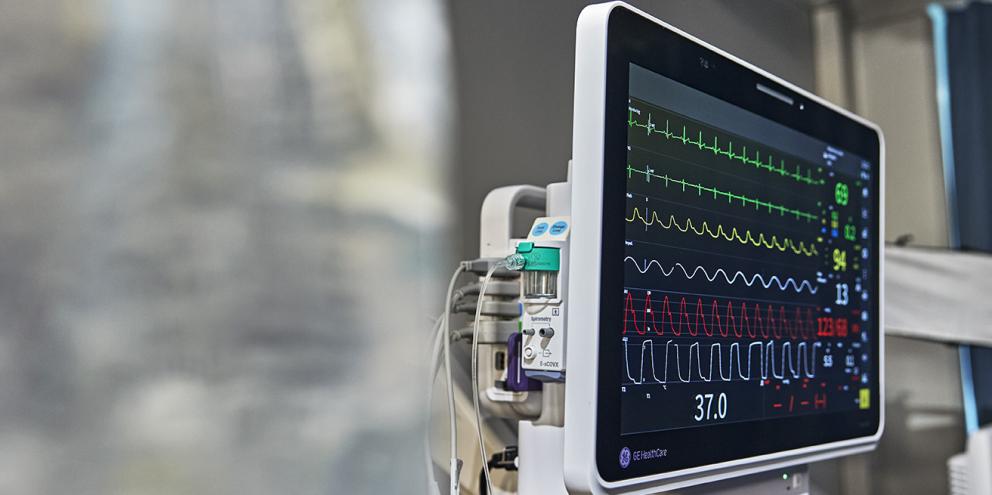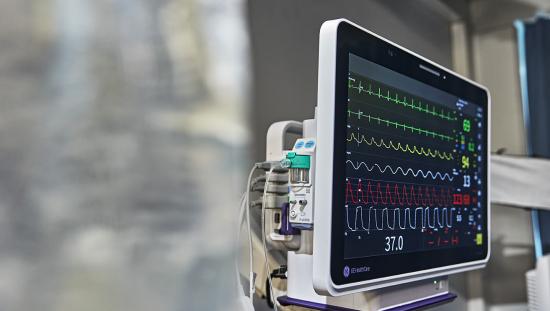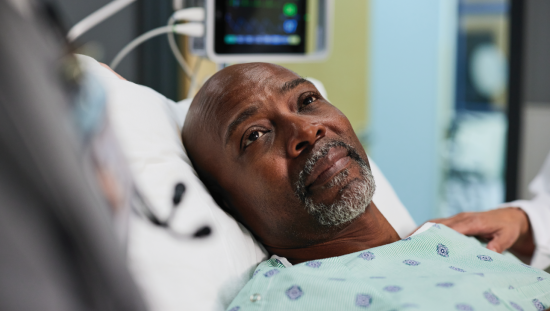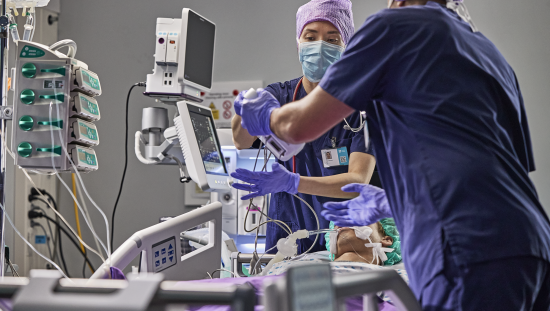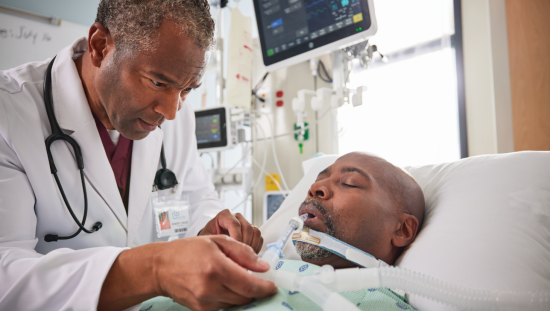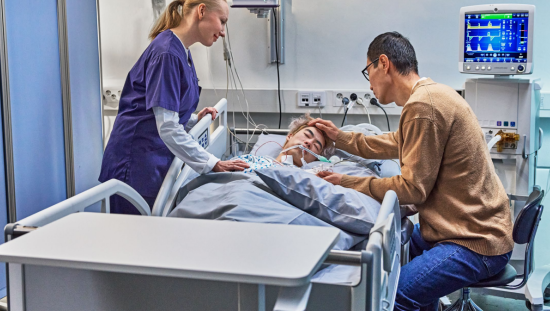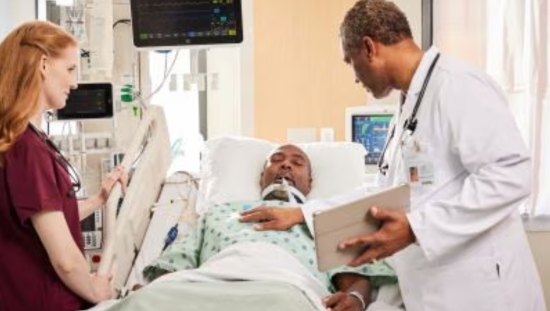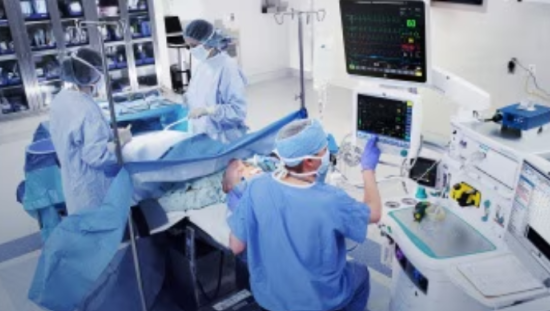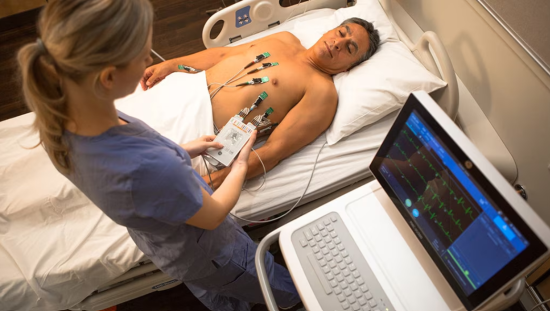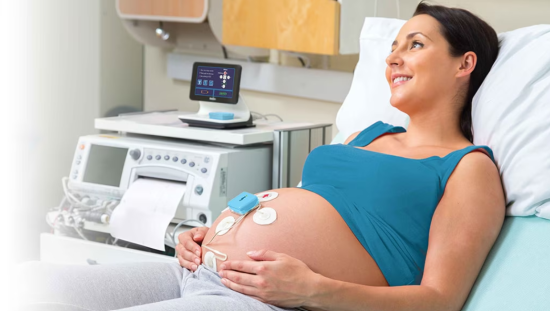The clinical storm: When data overwhelms instead of informs
Hospitals are increasingly defined by their data ecosystems. Every patient generates a continuous flow of physiological signals, lab results, imaging, and device outputs. In theory, this data should empower clinicians. In practice, it often does the opposite.
Alarm fatigue is a well-documented phenomenon. Clinicians exposed to frequent, non-actionable alerts can become desensitized, leading to delayed responses and compromised patient safety1. At the same time, staff shortages mean fewer people are available to interpret and act on this data, increasing the cognitive burden on already stretched teams.
The result is a clinical environment where critical information is buried under noise, and where the potential for timely, life-saving decisions is lost in translation.
The impact: Real-world consequences of data overload
The implications of unmanaged data are profound. Delayed interventions can lead to deterioration that might have been preventable. Inconsistent interpretation of data contributes to variability in care, undermining quality and trust. Clinicians face burnout, and institutions bear the financial cost of longer stays, complications, and readmissions.
This isn’t just a technical issue—it’s a human one. When data becomes a barrier instead of a bridge, patients suffer, and care teams lose confidence.
The turning point: Smarter monitoring platforms as clinical allies
The solution lies in reimagining how data is delivered and consumed. Advanced patient monitoring platforms are designed not just to collect information, but to make it meaningful.
These platforms integrate data from multiple sources into a unified, intuitive interface. Instead of forcing clinicians to piece together fragmented insights, they offer real-time trend analysis, predictive indicators, and intelligent notifications that highlight what matters most. The result is a reduction in cognitive load and an increase in clinical confidence.
By contextualizing data and presenting it at the point of care, these systems support faster, more accurate decisions. They also help improve care delivery, reducing variability and improving outcomes across the board2.
The outcomes: Better decisions, better care, better value
Hospitals that adopt smarter monitoring platforms report measurable improvements. Early detection of deterioration leads to timely interventions. Streamlined workflows reduce delays and duplication. Drug use is optimized, and unnecessary procedures are avoided.
Clinicians benefit from reduced stress and clearer guidance, while institutions see gains in efficiency and financial sustainability. In short, when data is transformed into insight, everyone wins3.
GE HealthCare in action: Turning insight into impact
GE HealthCare is at the forefront of this transformation, offering a suite of tools that exemplify how smarter monitoring can drive better care.
Adequacy of Anesthesia (AoA) combines EEG-based entropy monitoring, neuromuscular transmission, and hemodynamic parameters to tailor anesthesia delivery. This precision reduces the risk of under- or overdosing, improves recovery times, and lowers costs3.
👉 Explore AoA outcomes calculator
Entropy monitoring helps clinicians avoid unnecessarily deep anesthesia by measuring brain activity. This supports faster emergence and more personalized care4.
👉 Read the Entropy quick guide
Surgical Pleth Index (SPI) provides a non-invasive measure of nociception during surgery, helping clinicians fine-tune analgesia and reduce opioid use5.
👉 Download SPI quick guide
Multiparameter notifications combine physiological signals into a single alert, improving situational awareness and reducing alarm fatigue2.
👉 Read the white paper
Alarm management through GE HealthCare’s Carescape platform uses smart algorithms to reduce false alarms and improve response accuracy.
👉 Explore Carescape alarm management
Conclusion: Insight is the new currency of care
In a world where every second counts, the ability to turn data into insight is not just a technical advantage—it’s a strategic imperative. Smarter monitoring platforms empower clinicians to act with speed, precision, and confidence, transforming care delivery from reactive to proactive.
For clinical leaders and decision-makers, the message is clear: investing in smart monitoring is investing in better outcomes, stronger teams, and a more resilient healthcare system.
References
- Michels EA, Gilbert S, Koval I, Wekenborg MK. Alarm fatigue in healthcare: a scoping review of definitions, influencing factors, and mitigation strategies. BMC Nursing. 2025.
- Bilkovski R. Optimizing critical care: the untapped potential of multiparameter notifications. GE HealthCare White Paper.
- GE HealthCare. Adequacy of Anesthesia (AoA) Outcomes Calculator. Clinical View.
- GE HealthCare. Entropy Monitoring: A Valuable Tool for Guiding Delivery of Anesthesia. Clinical View.
- Huiku M, Kamppari L, Viertio-Oja H. Surgical Pleth Index in Anesthesia Practice. GE HealthCare Clinical Review.

